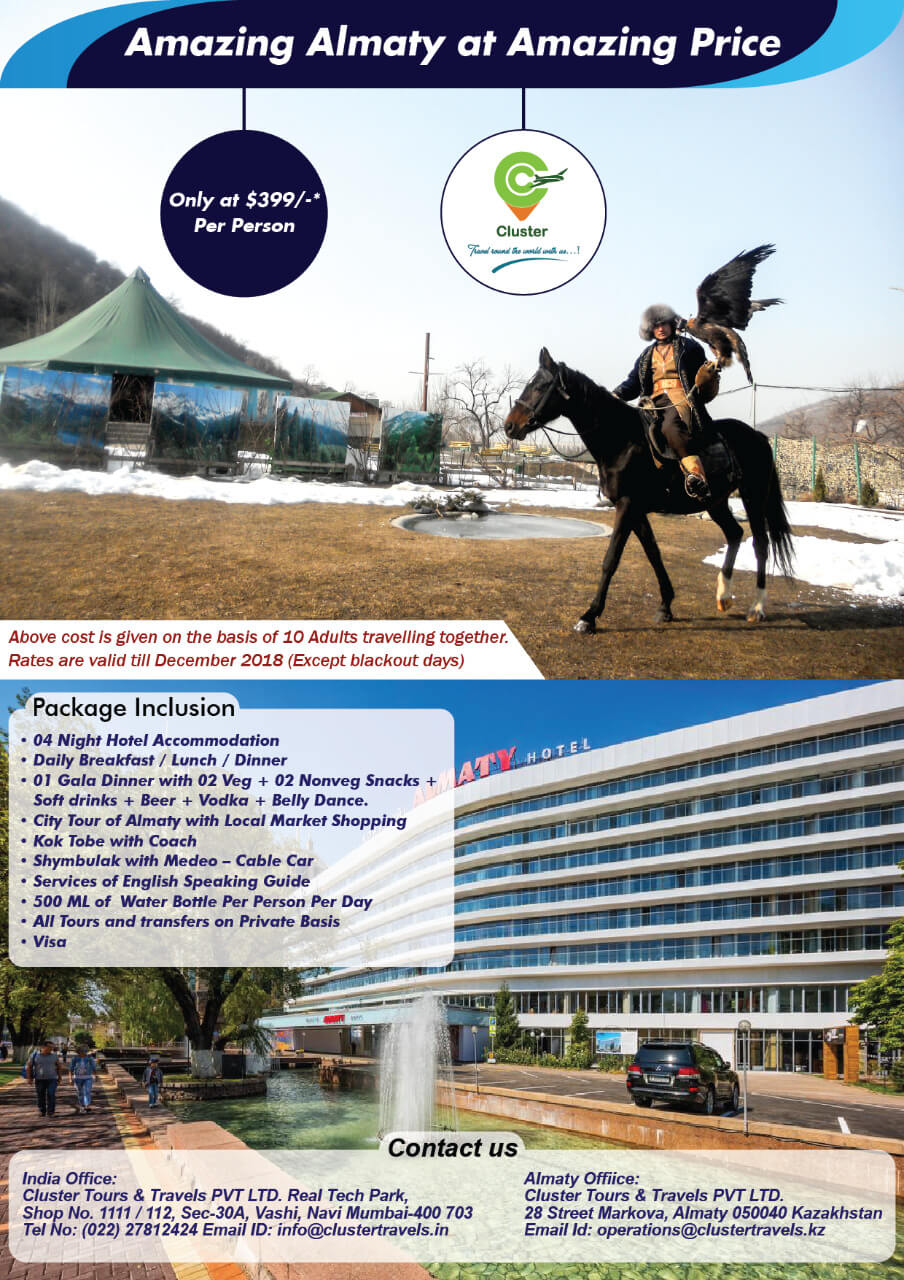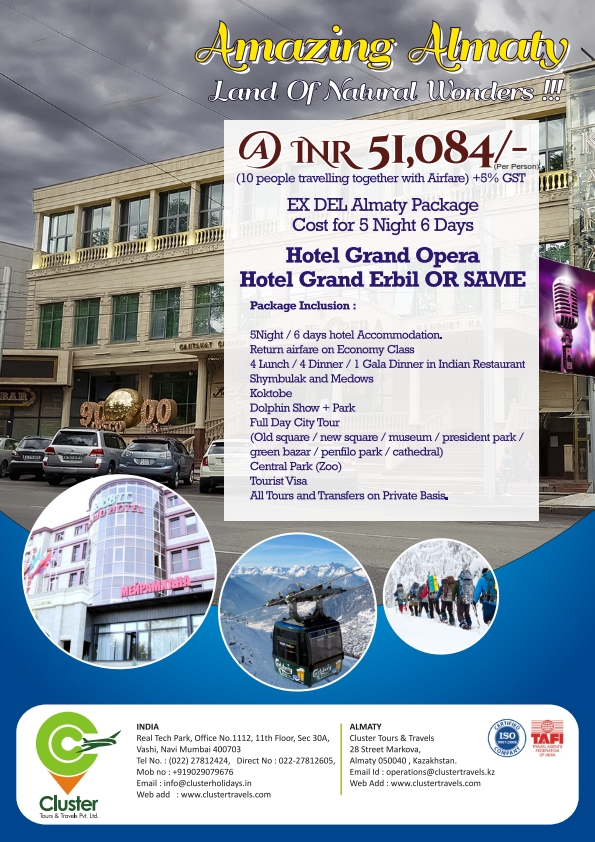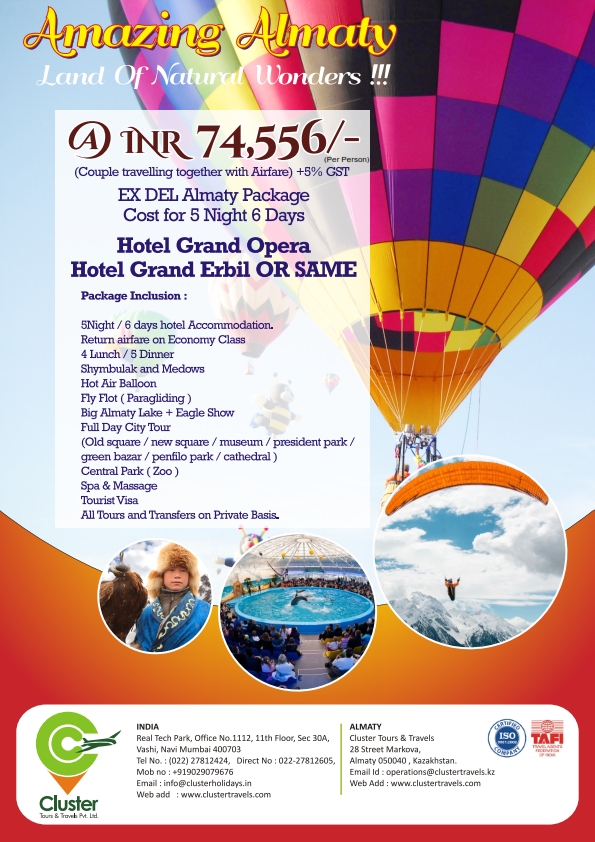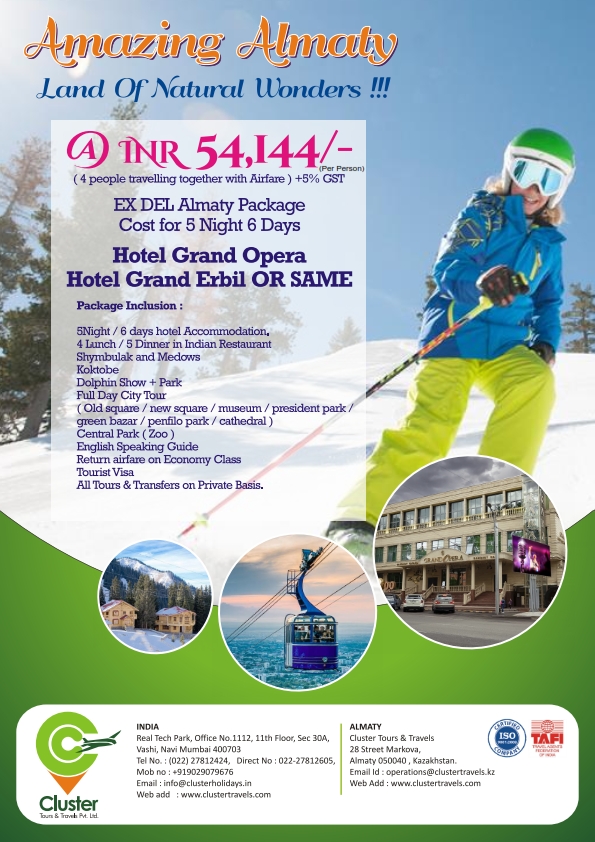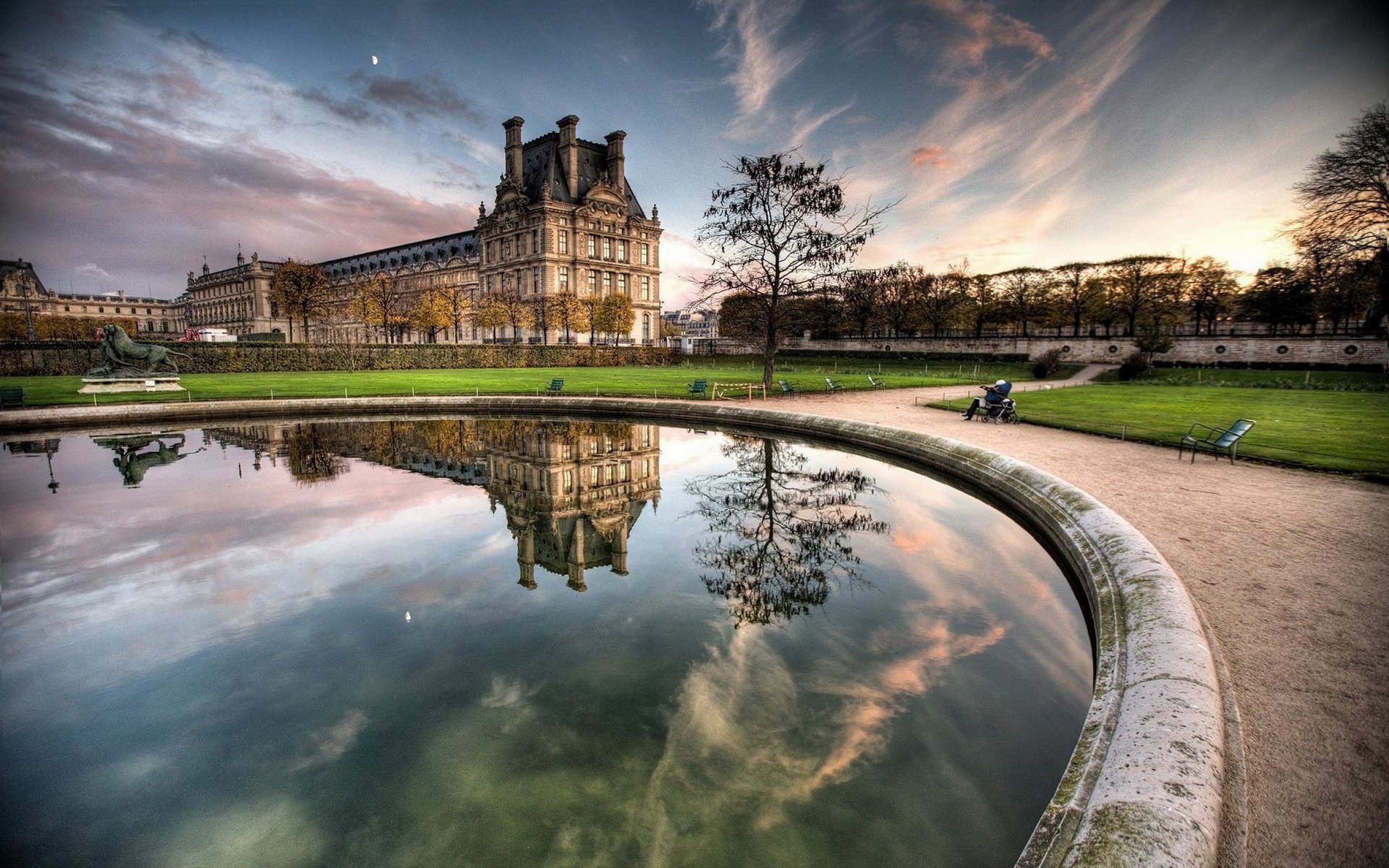




DAY 01 – BY AIR / BY TRAIN – ARRIVE BHUJ
Arrive Bhuj and transfer to your hotel.
The historic city of Bhuj derives its name from the Bhujiyo Dungar, a hill, overlooking the present day Bhuj town. Bhuj is a typical example of a desert town located between two geographical features – Bhujiyo Dungar on the east & Hamirsar Lake on the west. Bhuj, the major town of Kutch, is an old city established in 1510. With its surrounding wall, the atmospheric bazaar area, crenelated gateways, old palaces and striking temples the town still retains a medieval character. Every Feb/Mar it hosts the annual Rann Utsav festival.
Overnight at hotel
DAY 02 – IN BHUJ
After breakfast visit the Banni Villages. Visit Ajrakhpur and Bhujodi.
The artisans of Ajrakhpur specialize in Ajrakh – a Block Printed cotton cloth used traditionally by local herdsmen with natural dies. Its geometrical and nonfigurative motifs often mirror those appearing in Islamic – influenced Indian architecture.
Later stop at Bhujodi – a village skilled in traditional Bandhani (tie & dye), block printing and weaving. Here you can view live demonstrations and buy anything from shawls to blankets from the artisans directly. Bhujodi is also a centre for Piltoom weaving, Mewada Embroidery & Wood Carving. Nearby is the Hiralakshmi Crafts Park – a nonprofit undertaking by the Ashapura Group of Companies that works with artisans throughout Kutch to show their skills and retail their crafts.
Not far from Bhujodi is Shrujan, a non-profit working to complement rural women’s income through the enhancement and marketing of their embroidery products. Shrujan has a store, design centre, manufacturing unit and an impressive collection of embroideries on site. One can also tour the campus which utilizes traditional and environmentally sensitive architecture. Types of Embroideries: Aahir Embroidery, Soof Embroidery, Chakan Embroidery, Jat Fakira Embroidery, Jat Garasiya Embroidery, Kambiro & Khudi Embroidery, Katri Embroidery, Kharek Embroidery, Mukko Embroidery, Neran Embroidery, Pakko Embroidery, Rabari Embroidery.
Overnight at hotel
DAY 03 – IN BHUJ
After breakfast visit the villages of Bhuj. Amidst the Desert land of infinite dimensions, are suspended, quaint little villages. These are the last villages on the India-Pakistan border. Here you will come across master craft people’ exposing their traditional art, turning our master pieces every day. Their ornaments, clothes, utensils, everything they use – will make you feel as if you have stepped into lifestyle museum leaving you spellbound.
Visit the villages of Bhirandiyara: Bhirandiyara is a favourite Tea stop for locals and visitors alike on the road to Khavda. The village boasts of a delicious sweet – fresh Maavo. This milk-based sweet is best when eaten hot. Most of the roadside stalls sell Maavo. The local Meghwal Community has exquisite embroideries and skilfully decorated, colourful Mud Bhungas. Mud-Mirror work – Lippan kam is a decorative art done by common people mainly women. Lippan kam is done inside Bhungas / mud huts in villages of Kutch; sometimes you can find it on outer walls too. Generally, women make birds, trees, animals, and peacock, human figures etc in Lippan kam. It is done with a mixture of clay and camel dung. Then gum is used to stick mirrors. Originality of lippan kam lies in adding no colour or only whites. Small round, diamond-shaped or triangle mirror pieces are essential to lippan kam.
Nirona: The village of Nirona is the only place in the world where the tradition of Rogan art is still practiced (a method of producing dyes from natural resources and castor oil and creating intricate and long-lasting designs on silk and cotton). Rogan art is a rare craft that is not well known even in India. Because of its rare qualities, its practiced by only one family in India and they reside in Nirona village in Gujarat.
Nirona also offers the chance to see artisans making copper bells. The Luhars in Nirona have been preserving the craft of making copper bells over seven generations. The art form originally comes from Sindh and some sister villages in Pakistan too make similar bells but with carvings on the surface.
Another family in Nirona is practicing wood lacquering. Raw lacquer in various colours that is passed with great skill on the wooden object of focus in beautiful waves. The work they do is mainly focused on household items like jewellery boxes and kitchen utensils and has known to last more than 30-35 years. If the lacquer work starts to lose its sheen, just apply some oil on it,
Khavda (90 Km. Approx.) – a town of Pachcham Region. One can find a tiny market and a few stalls serving up Kutchi snacks & tea. One can visit to Khatrivas to see artisans printing & selling Ajrakh. The town also has skilled Leather Craftsmen and there are some shops retailing local crafts, including Leather Slippers. Off the main road is a clinic run by Kutch Mahila Vikas Sangathan (KMVS), Federation of Kutchi Women’s groups. KMVS has trained local midwives in modern and locally suitable healthcare practices. The KMVS Office in Khavda is run almost entirely by local women and has a small retail outlet selling wonderfully intricate embroideries under the producer group’s brand name “QASAB” which means “Craft Skill”.
Ludiya: Ludiya Village is comprised of several hamlets belonging to the Meghwal & Samma Communities. The latter community, primarily herdsmen, is more conservative when it comes to tourists. Gandhi nu Gam, populated by the Meghwal community, features beautifully Painted Bhungas. The Kanjari (Blouses) of the women and the Bhunga decoration of this village are especially colourful. To curb exploitation & experiment with community marketing, the hamlet has set up an “Otlo” or a roofed platform next to the Temple, where each household brings out their embroidered goods for selling.
Dhordo: Dhordo village has been situated as a last village in the area. Dhordo, has had approx.70houses, having 450 odd population of communities of Mutva (90%), Sheikh (8%), and Harijan (2%) involved in doing the jobs of various handicrafts popularly well known as ‘Banni Handicrafts ’which have become famous world across. Here the minutest of minute and expensive embroideries and mud work are done. Their craftsmanship and artistic works are so much excellent that craftsmen/artists have been honoured by national awards. These people subsist and depend mainly on doing mud works, godadi works (very small quilts), patch – works, handmade embroideries as craftsmen and others on livestock as pastoralists (Maldharis).
Inspite of being a last remote village in the Banni area, Dhordo has assumed the status of high – tech village, having the facilities of ATM being run on solar system, a higher secondary school with latest computers. Thus, Dhordo stands out as a model village in Kutch, attracting the industry like Bromine industry and tourism. A solar plant covering the whole village for adequate power – supply for it has been installed. Not only this but as for the water – supply particularly the drinking water, it has been managed by the filtration of the collected water of the pond, which is maintained and becomes useful in the critical situation of shortage of water in summer.
Overnight at hotel
DAY 04 – IN BHUJ – BY ROAD – 65 KMS / 01 HR – BHUJ TO MANDVI (ONE WAY)
After breakfast proceed for day excursion to Mandvi.
Visit Kala Raksha Trust, a grassroots social enterprise, is dedicated to preservation of traditional arts. Envision this broadly, as holistic encouraging of the creative capacity of the artist. Comprising artisans, community members, and experts in the fields of art, design and museums, Kala Raksha was founded on artisan initiative in 1993 in the desert region Kutch, in India. Uniquely committed to documenting existing traditions, the Trust maintains a collection of heirloom textiles housed as a local Museum. Artisans participated in establishing this Museum. Thus, it embodies a simple but revolutionary concept: involve people in presenting their own cultures. Kala Raksha Centre is in Sumrasar Sheikh, 25 km north of Bhuj.
Here, the museum, production unit, shop and guest house inhabit structures that adapt traditional architecture to contemporary function. A model for community development, the Centre is locally managed and operates with solar power.
Kalaraksha Vidhyalaya: Kala Raksha Vidhyalaya is an initiative of Kala Raksha Trust. In its second decade, Kala Raksha sought to address India’s most pressing need: Education. In October 2005, the Trust launched this institution, whose environment, curriculum and methodology are designed for traditional artisans, as a new approach to the rejuvenation of traditional arts. Project Director Judy Frater, was awarded an Ashoka Foundation Fellowship to realize the project. In March 2009, she also received the Sir Misha Black Medal for design education.
Later continue to drive to Mandvi.
Mandvi is located on the banks of the Rukmavati River, barely one km from the Arabian Sea at the Gulf of Kutch. The town has a very pleasant climate throughout the year and it was a summer retreat of the Kutch Maharaos. The centre of attraction at Mandvi is the Vijay Vilas Palace, a royal abode set in the middle of well-laid gardens with water channels and marble fountains. The architect and craftsmen from Jaipur designed and constructed the palace in 1920 AD. The palace has all the elements of Rajput architecture and draws largely on the plan of palaces of Orchha and Datia. The central high dome on the pillars, the Bengal domes on sides, the windows with colored glass, carved stone Jaalis, domed bastions at the corners, extended porch and other exquisitely stone carved elements, make the palace worth visiting. It owns a private beach, maintained in an eco-friendly manner to preserve its pristine beauty. It is an example of the traditional skill of craftsmen of early 20th century.
Visit Ship building yard. On the banks of the Rukmavati River, just south of the bridge, you can visit the still-active shipbuilding yard. Craftsmen still assemble ships out of wood, for local or international guests, and you can feel free to watch them work. It gives us an opportunity to watch handmade ship being built which will make one truly appreciate craftsmanship. The process is long and elaborate and shoddy workmanship means risking sailors’ lives.
Later drive back to Bhuj.
Overnight at hotel
DAY 05 – BY AIR / TRAIN – DEPART BHUJ
After breakfast visit the Kutch Museum, formerly known as the Fergusson Museum. The Kutch museum is the oldest museum in Gujarat. This museum is built in the Italian style and located in picturesque surroundings on the banks of the Hamirsar Lake. The museum has a large collection of Kshatrapa inscriptions, various archaeological objects, arms and specimens of various crafts of the Kutch region.
The Cenotaphs Complex or Chattardi was built of red stones. These tombs were ruined by the successive earthquakes since 1819.
Kera is mainly known due to the 10th century old temple of Lord Shiva.
Prag Mahal was constructed by Rao Pragmalji II who appointed a famous architect, Colonel Henry Saint Wilkins to design Prag Mahal, who had earlier designed Deccan College, Sasoon Hospital, Ohel David Synagogue. Prag Mahal took about 10 years to get built at the cost of 20 lakh rupees.
Aaina Mahal Palace was built by Rao Lakhpatji in 1750 AD. Aaina Mahal is a part of a large palace complex. It is a two Storey building with Darbar Hall, hall of mirrors, and suites for royal family. In the 18th century, the Rao Lakhpatji sent a local craftsman Ramsingh Malam to Europe to perfect his skills in glassmaking, enamelling, tile making and iron founding. After he returned, he constructed the Aaina Mahal with the hall of mirrors of Venetian glass.
Later in time transfer to Bhuj Airport / Railway Station to board flight / train for your next destination
Hotels Accommodation
Mail as per Itinerary
Economy Air Ticket
Tourist VISA
Travel Insurance
There is no content
1) Bhuj is a city in the state of Gujarat, western India. It’s known for its centuries-old buildings, many of which were damaged in a 2001 earthquake. Close to Harmirsar Lake, the 18th-century Aina Mahal palace is elaborately decorated with chandeliers, mirrors and semi-precious stones. Nearby, the Italian Gothic–style Prag Mahal palace has a bell tower that overlooks the city, and a courtyard containing a Hindu temple
2) Mandvi is a town with municipality in the Kutch district in the Indian state of Gujarat. It was once a major port of the region and summer retreat for Maharao of the Cutch State.
Special Offers
